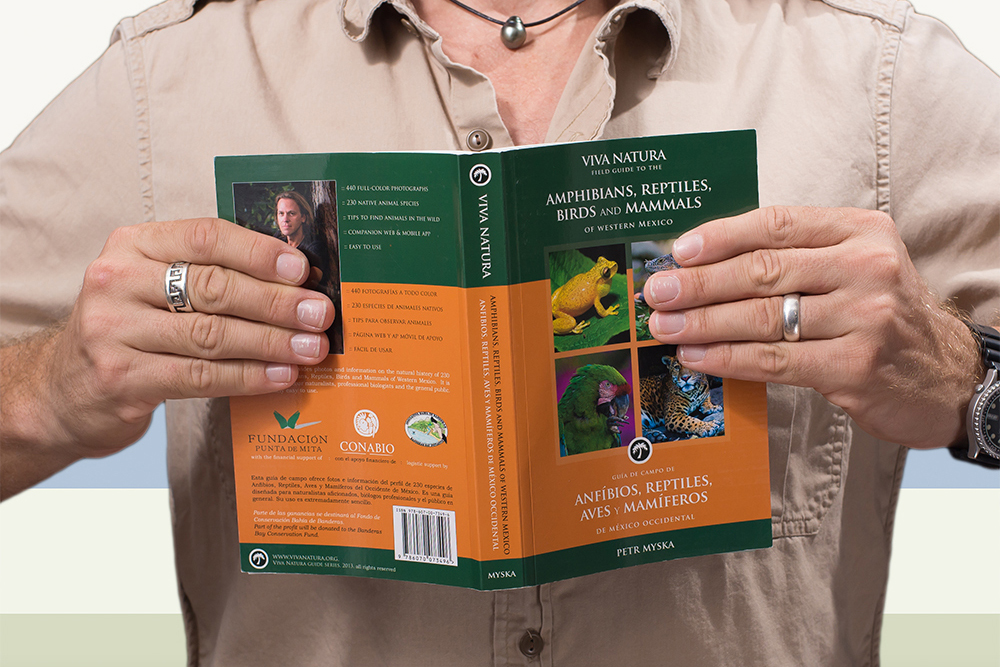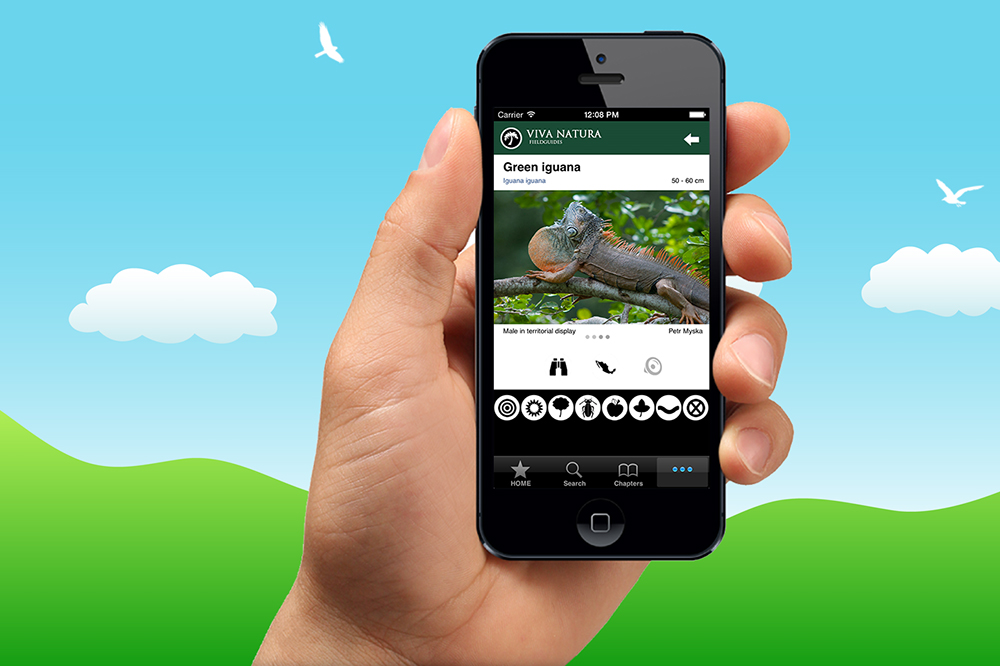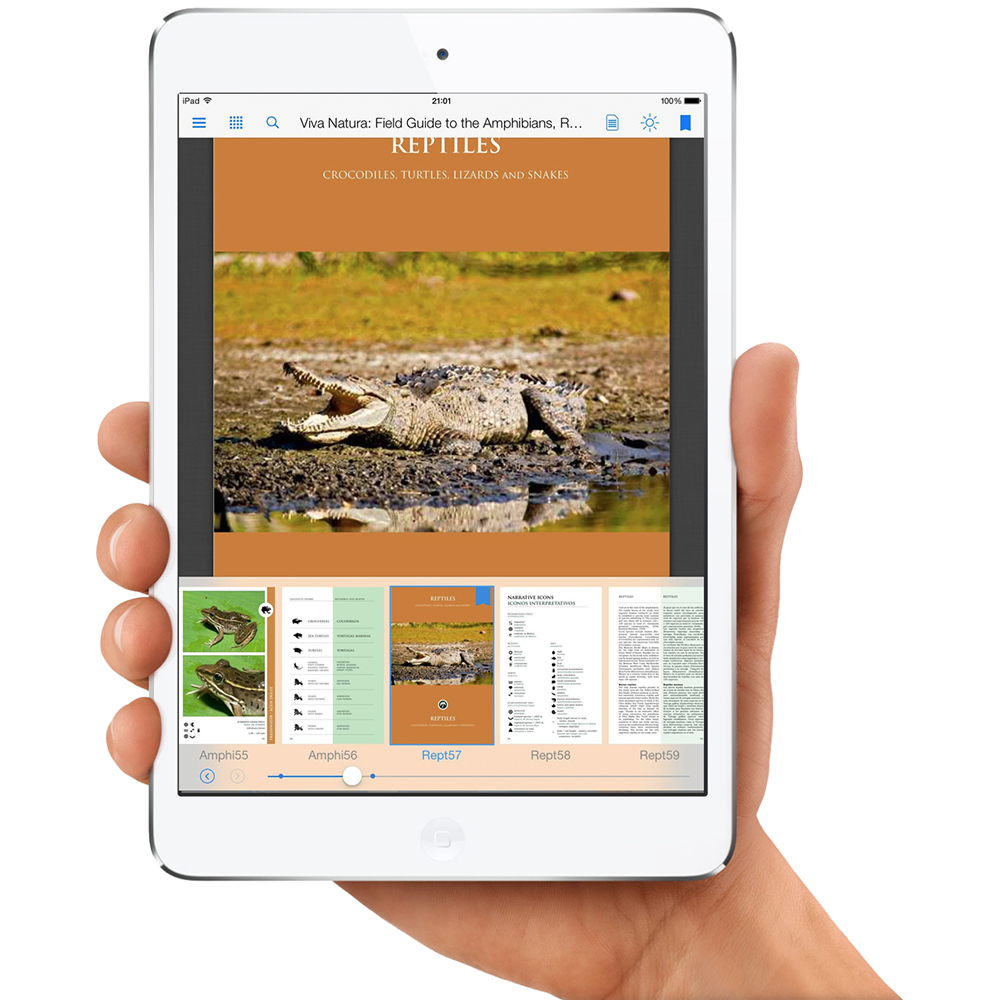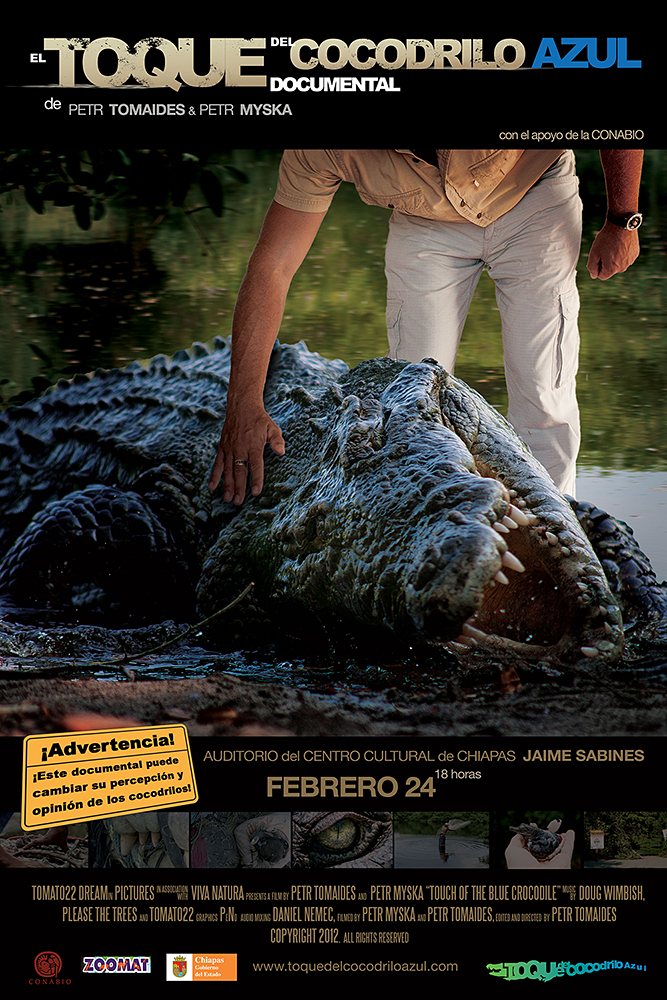The Viva Natura: Field Guide to the Amphibians, Reptiles, Birds and Mammals of Western Mexico
is the first publication of its kind written about the fauna of this region. The purpose of the field guide is to introduce the reader to the wealth of amphibians, reptiles, birds and mammals of Western Mexico and help identify them in the field. This guide contains the vast majority of the conspicuous animals of the region.
- 230 species
- 440 color photos
- bilingual – English/ Spanish
- easy to use
- companion mobile APP
In this second edition there are 230 species in this guide and a total of 440 full-color photos. The guide is extremely easy to use. The book is completely bilingual (English and Spanish). The book commences with a brief introduction to the study area, its geography, climate and ecosystems. Chapters dedicated to the four groups of fauna (amphibians, reptiles, birds and mammals) follow. Each chapter begins with an introduction followed by photographic plates that depict conspicuous species of the study area.
All photos were taken by the author himself and with few exceptions, show animals in their natural habitat under completely natural conditions. Each species is described by both its common and scientific names and also by a set of icons that illustrate the species characteristics, such as its habits, diet, preferred habitat, protection status, ect.
Color bands on the outer edge of each species plate indicate one of the three principal habitat types (Ocean, Coast and Islands, Freshwater, Forest and Gardens) where this particular species can be observed most frequently. Silhouette thumbs on the plates edges portray a typical member of each group of fauna, making browsing the guide more efficient. The final chapter of the book is dedicated to the conservation issues inside the study area.
The book is supported by a companion mobile app where additional texts, photos and also sounds and distribution maps can be found.
Review
Note: First edition review (2009)
Note: First edition review (2009)
This is an amazing photographic guide of the most common fauna of Western Mexico. It is very useful for tourists visiting Puerto Vallarta, Mexico during vacations. A great part of the species mentioned in this book can be observed just by opening the window of your hotel. That’s because Puerto Vallarta is surrounded by the beautiful Tropical forest. The guide give some interesting information of fauna seeing places in Western Mexico and some facts about the species. This book gives a great visual pleasure. —written by Fabio Cupul Magana (2007)






